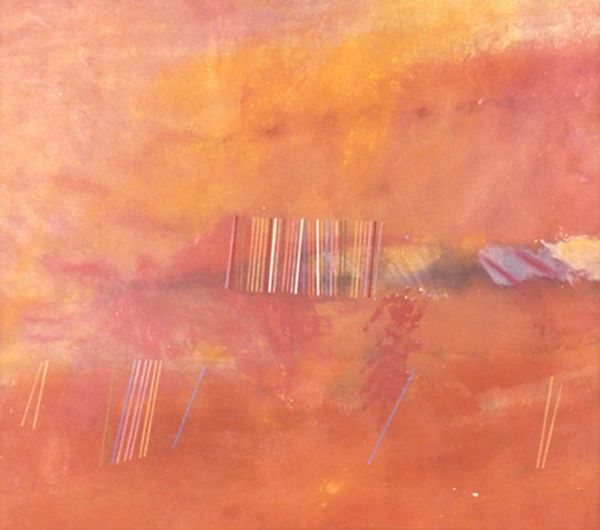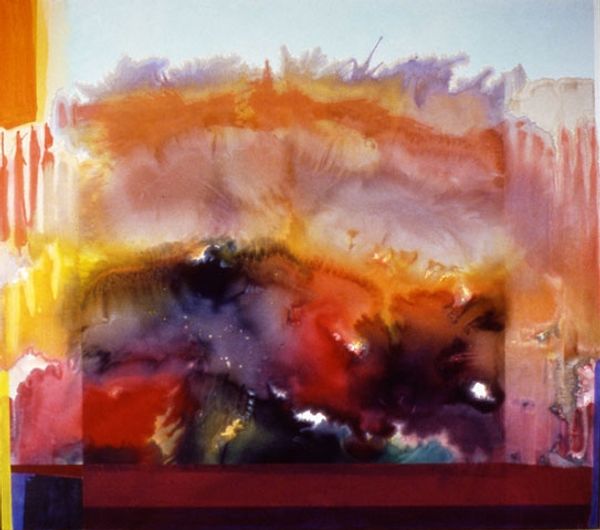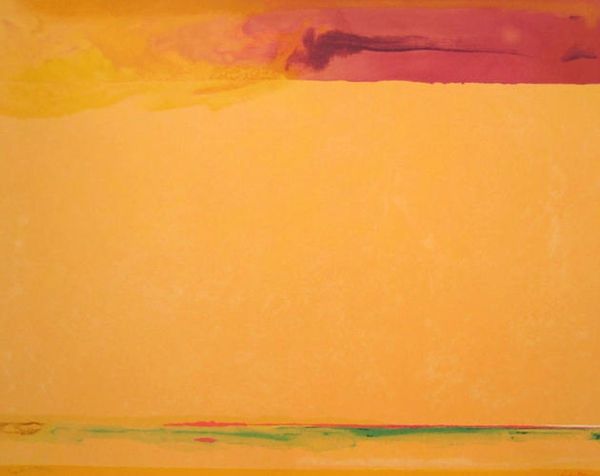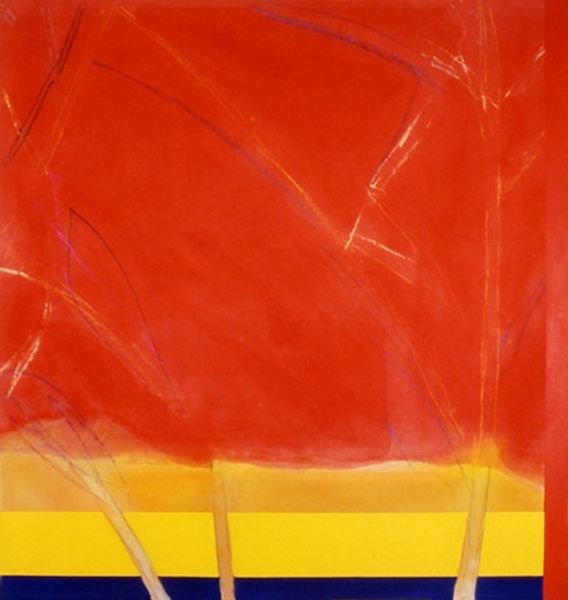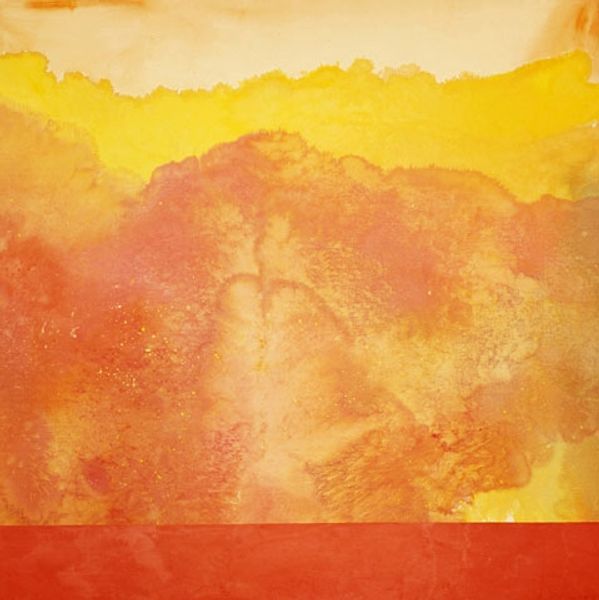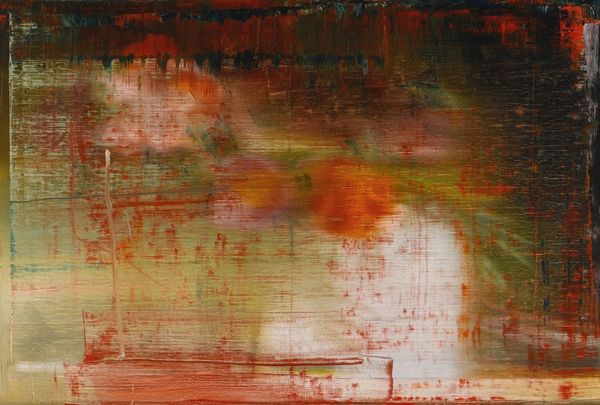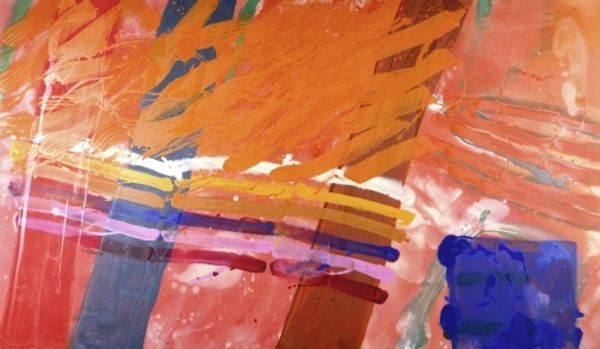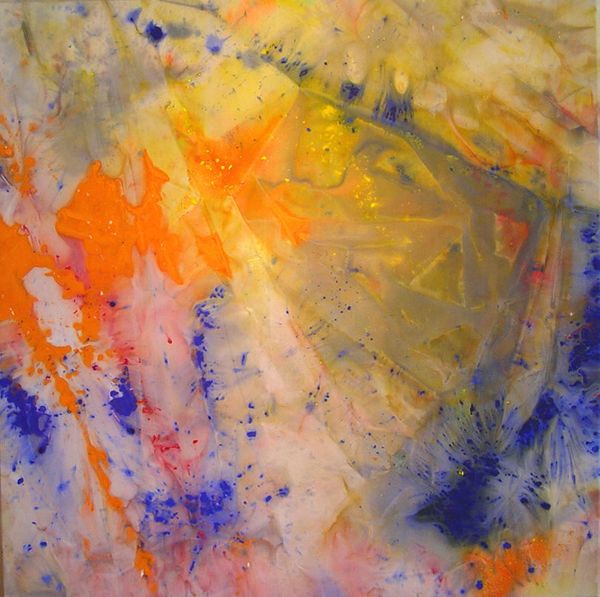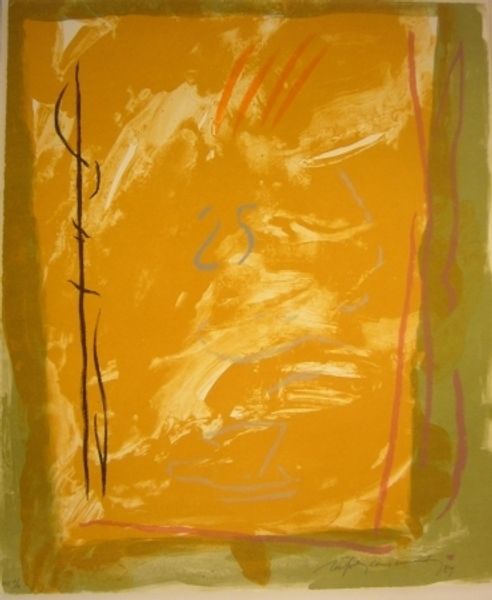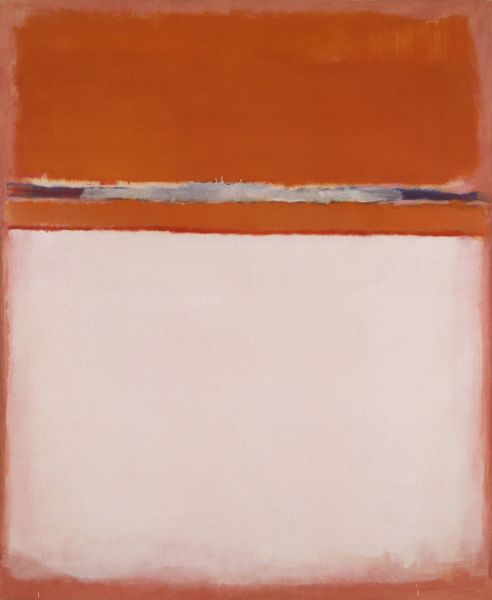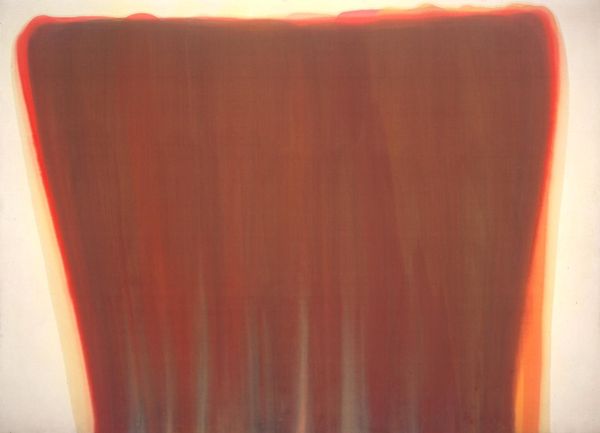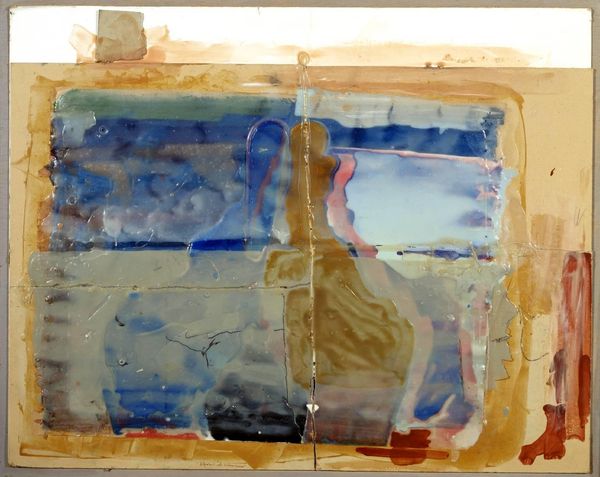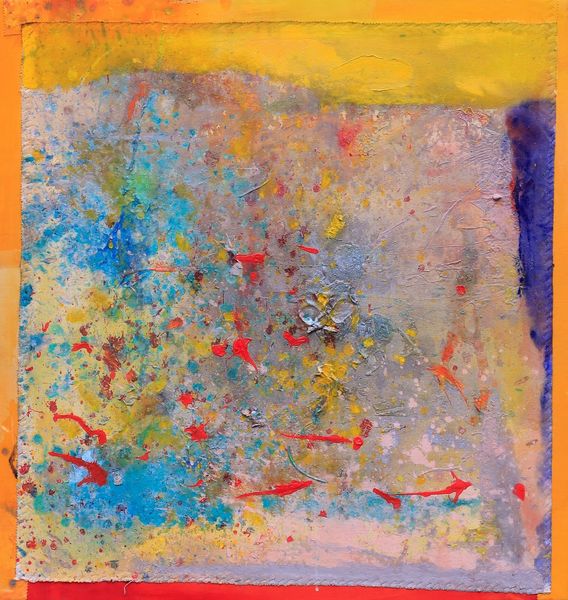
Copyright: Ronnie Landfield,Fair Use
Editor: Today, we’re looking at Ronnie Landfield's "For The Ages," created in 1985 with acrylic paint. There's such a strong contrast between the solid blocks of color and the hazy, almost atmospheric center. What's your take on how it fits into the art world of the '80s? Curator: The work's date is important. By the mid-80s, abstract expressionism's initial revolutionary fervor had faded. However, Landfield revisits it, but with a self-awareness that nods to the changed art world. The clean edges challenge the purity of the original movement. Do you see any influences beyond Abstract Expressionism at play? Editor: Definitely! The hard edges feel very contemporary, almost like a commentary on color field painting as well. What do you think Landfield might be saying about history with a piece like this? Curator: Perhaps that history isn’t a monolithic block but is composed of layers and contrasting experiences. Landfield re-examines what it means to engage with a canonized art movement like abstract expressionism during the post-modern period. Are the colors themselves referencing particular historical contexts? Editor: It’s possible. The earthy tones in the central section have this retro quality, like photos from the '70s, while the sharp, brighter colors read as very "1980s." Curator: Exactly. Landfield could be making a conscious effort to represent the dialogue between different periods. His visual language reflects larger debates happening in the art world surrounding originality and appropriation. I’d encourage everyone to think about where they place themselves in this continuum and think critically about the historical placement of art objects within a contemporary framework. Editor: This piece makes me think about how artists always respond to those who came before, while adding their unique voice to the conversation. Curator: And that very act of response is deeply embedded in cultural and political factors too. A complex, multilayered response becomes part of that larger dialogue, as you pointed out.
Comments
No comments
Be the first to comment and join the conversation on the ultimate creative platform.
